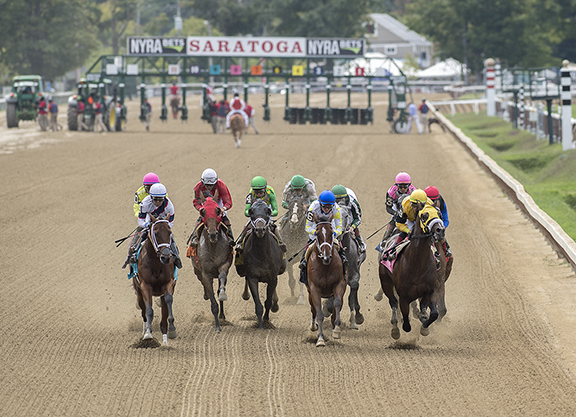By Bill Finley
According to figures released Monday by Equibase, handle on U.S. racing dipped slightly in 2019, down 2% from 2018 numbers. The decline reversed a 4-year trend in which handle had risen every year from 2015 through 2018.
When factoring in a decrease in number of races run, from 36,586 to 36,207, handle also declined, but by just 1%. A total of $11.04 billion was wagered in 2019.
“I think it is extremely worrisome,” said Marshall Gramm, the Professor and Chair of the Department of Economics at Rhodes College and a horse owner and gambler. “We had a short-term spike after the changing of the tax law, but that has dissipated with competition from other forms of wagering like sports betting. When field size goes down, and it continues to fall year after year, it becomes harder and harder to find value in the pools. When fields are big, takeout is still meaningful but less meaningful because there is the opportunity to throw out horses and the opportunity to find value. The combination of decline in field size, rising host fees and competition from other gambling ventures creates a situation that is real cause for concern.”
There was better news for the sport in terms of gross purses, which totaled $1,117,743,340, establishing a new record for U.S. purses and a 4.49% increase. Purses have now risen for two straight years for an 8.1% increase over 2017 figures.
Average field size fell by 0.93%. There were, on average, 7.59 starters per race in 2019 and 7.66 in 2018. It was the fifth straight year in which average field size declined. Gramm said the industry should be concerned that purses are rising but field size is on the decline.
“I'm not sure breeders are responding to higher purses, and that's because they may not believe they'll be there in five years.” he said. “If we don't have more horses or figure out how to get the ones we have to race more often, we have real problems.”
Eric Hamelback, the CEO of the National Horsemen's Benevolent and Protective Association, contended that the industry should not be alarmed by the figures released Monday.
“When I look at numbers, overall I don't like to compare year to year,” he said. “I try to look at at least a five-year picture, if not longer. We have stability and, in my mind, that means something. It's positive that purses continue to go up. As far as handle goes, these are fairly stable numbers and that's why I feel positive about them. We are getting a lot more competition for the entertainment, gambling dollar and I think that is going to increase with more states making sports betting legal. If you do compare year to year, you had a Triple Crown winner in 2018 I think that gives some leeway in justifying a small decrease in overall handle.”
One bright spot out of the numbers released Monday was that handle was up slightly in the fourth quarter of 2019, showing a 0.85% increase.
“While the 2019 economic indicators reflected a decline in handle, the industry rallied in the second half of the year to regain much of the momentum that was built over the past five years,” said NTRA President and CEO Alex Waldrop. “The growth in purses continues to show the positive impact of alternative gaming options at racetracks, including historical horse racing. Going forward, the industry will return to positive growth if, among other things, we demonstrate the willingness and ability to do everything we can to prevent horse injuries and fatalities.”
Looking beyond a 5-year window, the 2019 handle figures indicate a sport that has not been able to grow since 2003, when a record $15.18 billion was wagered. When adjusting for inflation, 2003 handle figures translate to $21.22 billion in 2019.
Along with the increased availability of sports betting and smaller fields, the negative publicity that surrounded the sport due to a rash of breakdowns at Santa Anita may have affected handle.
Not a subscriber? Click here to sign up for the daily PDF or alerts.






